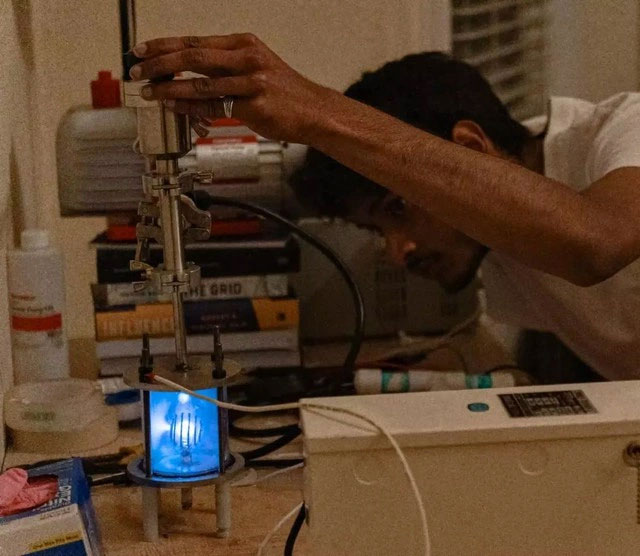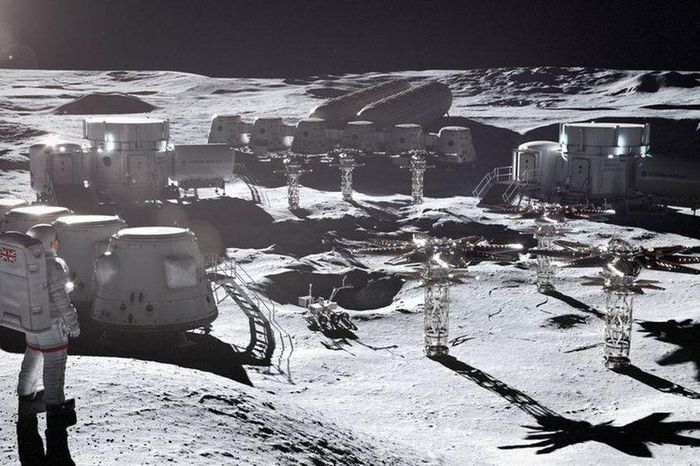A student uses AI to create a nuclear reactor at home
Hudhayfa Nazoordeen, a student and mathematician at the University of Waterloo (Canada), built a nuclear reactor right in his bedroom.

Hudhayfa's reactor is based on the principle of nuclear fusion, using deuterium - a stable isotope of hydrogen, to trigger a nuclear fusion reaction. This process has almost zero carbon emissions, so it has the potential to produce clean energy, which is expected to become the main energy source of the future.
Hudhayfa's model is just a small reactor and cannot be applied in practice. However, Hudhayfa's success shows the potential of applying AI technology to scientific research.
AI Claude assisted Hudhayfa in calculating complex mathematical equations, helping to simulate and predict chemical reactions, helping to optimize reactor design to ensure safety and efficiency. Based on Claude's calculations and predictions, Hudhayfa gained a better understanding of how nuclear reactors work and how to operate them safely.
However, many people are concerned that risks can arise when powerful technologies like AI Claude are used by people without sufficient expertise in sensitive areas like nuclear.
You should read it
- What is Claude Pro? How does Claude Pro compare to ChatGPT Plus?
- 'Deep' decoding attacks the Iranian nuclear reactor
- 4 ways AI Claude chatbot outperforms ChatGPT
- How to use Anthropic's new AI Claude 3 Prompt Library
- Claude or ChatGPT is the best LLM for everyday task?
- Anthropic launches Claude 3.5 Sonnet, beating ChatGPT 4o
- Anthropic Launches Claude 2: New Competitor for ChatGPT and Bard
- The world's largest fusion reactor, as tall as 6 buildings in Japan
May be interested
- What is left of the Earth if all the nuclear bombs in the world fire at the same time?
 let's try to find out if all 14,900 nuclear warheads on this planet are firing together, what will happen, is it the end of the world?
let's try to find out if all 14,900 nuclear warheads on this planet are firing together, what will happen, is it the end of the world? - Taxes 2020: How student loans affect your taxes
 repaying student loans might already be bogging you down. you may not be financially ready to buy a home or get married until you've paid off your student loans. but your student loans impact more than your future purchases -- they also affect your taxes.
repaying student loans might already be bogging you down. you may not be financially ready to buy a home or get married until you've paid off your student loans. but your student loans impact more than your future purchases -- they also affect your taxes. - How to register sim student Vinaphone
 along with 2 carriers viettel and mobifone, vinaphone also sent to the new student sim registration program to receive many other attractive incentives.
along with 2 carriers viettel and mobifone, vinaphone also sent to the new student sim registration program to receive many other attractive incentives. - Thailand introduces the first 'artificial sun'
 thailand's tokamak-1 fusion reactor jointly developed with china began operating on july 25, marking an important milestone in sustainable energy research and scientific cooperation between the two countries. .
thailand's tokamak-1 fusion reactor jointly developed with china began operating on july 25, marking an important milestone in sustainable energy research and scientific cooperation between the two countries. . - American scientist proposed the idea of destroying super typhoons with nuclear bombs
 reed believes that a nuclear weapon with an explosion equivalent to 20 million tons of tnt is enough to affect the storm.
reed believes that a nuclear weapon with an explosion equivalent to 20 million tons of tnt is enough to affect the storm. - Miniature reactor - a solution to supply energy to lunar bases
 astronauts living on the moon will need a lot of energy, but they cannot carry fuel supplies with them. the new generation of miniaturized nuclear reactors could be a great solution to this challenge.
astronauts living on the moon will need a lot of energy, but they cannot carry fuel supplies with them. the new generation of miniaturized nuclear reactors could be a great solution to this challenge. - What is left of the Earth after 100 nuclear warheads are detonated at the same time?
 the video below will help us better understand that terrible disaster. of course, everything is just a hypothesis of scientists, but it may be even more formidable.
the video below will help us better understand that terrible disaster. of course, everything is just a hypothesis of scientists, but it may be even more formidable. - The times the US lost nuclear bombs, they have never been found
 many nuclear bombs were scandalously 'missing', the us wanted the world to forget but could not.
many nuclear bombs were scandalously 'missing', the us wanted the world to forget but could not. - 5 most powerful nuclear bombs in the world ever built
 here are the 5 most terrible nuclear bombs ever built according to auto journalism.
here are the 5 most terrible nuclear bombs ever built according to auto journalism. - Shocking facts about the Trinity nuclear test
 80 years ago, the world's first atomic bomb test changed the course of history. it was the trinity nuclear test. here are the shocking facts about the trinity nuclear bomb test.
80 years ago, the world's first atomic bomb test changed the course of history. it was the trinity nuclear test. here are the shocking facts about the trinity nuclear bomb test.










 5 unnecessary smart home devices
5 unnecessary smart home devices How to blur video on CapCut
How to blur video on CapCut What is TikTok's Manage Topics feature?
What is TikTok's Manage Topics feature? Elon Musk wants people to watch X video on TV
Elon Musk wants people to watch X video on TV Instructions for managing print lists on iPhone
Instructions for managing print lists on iPhone 6 Reasons to Try NordPass
6 Reasons to Try NordPass